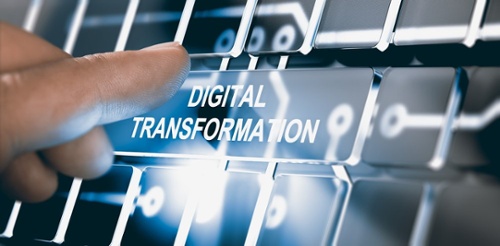 “My fellow Americans,” said every presidential candidate ever, “It’s time for a change.” Not every presidential candidate has said it in so many words, but when you boil down the rhetoric, that’s what it comes down to. The reality, of course, is things are going to change anyway, no matter who occupies the White House. The only thing about it that stays the same is that the occupant will always take credit when things change for the better and blame someone else when they don’t.
“My fellow Americans,” said every presidential candidate ever, “It’s time for a change.” Not every presidential candidate has said it in so many words, but when you boil down the rhetoric, that’s what it comes down to. The reality, of course, is things are going to change anyway, no matter who occupies the White House. The only thing about it that stays the same is that the occupant will always take credit when things change for the better and blame someone else when they don’t.
In business, success often hinges on either driving change or anticipating it accurately and dealing with it appropriately. In a previous article, we talked about transformation—specifically, digital transformation, which we defined as “organizational change through the use of digital technologies and business models to improve performance.” True digital transformation involves business objectives, a foundation of one or more digital technologies, and (perhaps most important) organizational change.
In this article, we discuss two additional types of digital change that businesses have to deal with: transcription and disruption.
Digital Transcription
Digital transcription is much simpler than digital transformation; it doesn’t involve much, if anything, in the way of organizational change, and may not have a particular business objective. It’s more of a “go with the flow” change that businesses implement because everyone is doing it.
Email is a perfect example. Businesses once communicated in-house by paper memos and information posted on bulletin boards, and with customers and vendors by postal mail. When email became commonly used and inexpensive to implement, companies adopted it because of its obvious benefits, such as faster communication, convenient electronic calendaring, and the reduction of paper, printing, and mailing expenses. By and large, business processes didn’t change; they just shifted, or transcribed, from paper to electronic form.
Digital Disruption
Digital disruption is more complex than digital transcription and less complex than digital transformation. We define it as the effect of digital technologies and business models on a company's current value proposition and resulting market position. Like digital transformation, it can involve radical changes to business processes and business models. Unlike digital transformation and transcription, which are planned, deliberate changes driven by and for a business, digital disruption is a response to external digital influences.
For example, a major component of the time-honored newspaper industry business model was classified advertising sales, which provided a large portion of a newspaper’s revenue. When Craigslist came along and reduced the customer’s cost for classified advertising to zero—and provided a searchable platform with photos, maps, and the security of anonymized email communication—that part of the newspaper industry’s business model was completely upended, and that source of revenue evaporated almost overnight. Some newspapers went out of business entirely, and most of those that remain are struggling to exist in a world where many consumers get their news online or by television (and at low or no cost) and printed classified advertising is essentially nonexistent.
Although digital disruption need not be negative, it's often cast in this light. As we now know, digital disruption can illuminate opportunities as well as threats. It all depends on how well businesses anticipate disruptive technologies and adapt to them. It’s not always the startups that come out on top in digital disruption.
Often, success in a digital disruption situation means catching the wave early and capitalizing on it, even if it means moving into somewhat different markets. The 1995-era Apple was known only as a computer company with a tiny share of the personal computer market. By anticipating the digital music revolution, driven first by miniaturization of hard-disk drive technology and then by flash memory, they were able to move into the portable music player market and become a leader before established companies such as Sony knew what was happening. A few years later, Apple did it again in yet another non-PC market with the iPhone.
Constant Change Is Here to Stay
The lesson in all of this is that modern businesses can’t sit still and expect to succeed. In nearly every industry, including those that have a long non-digital history, such as agriculture, construction, and mining, digital change is coming, if it’s not already here. The companies that survive and succeed will be those that embrace those digital changes, be they transcriptive, transformative, or disruptive.
















